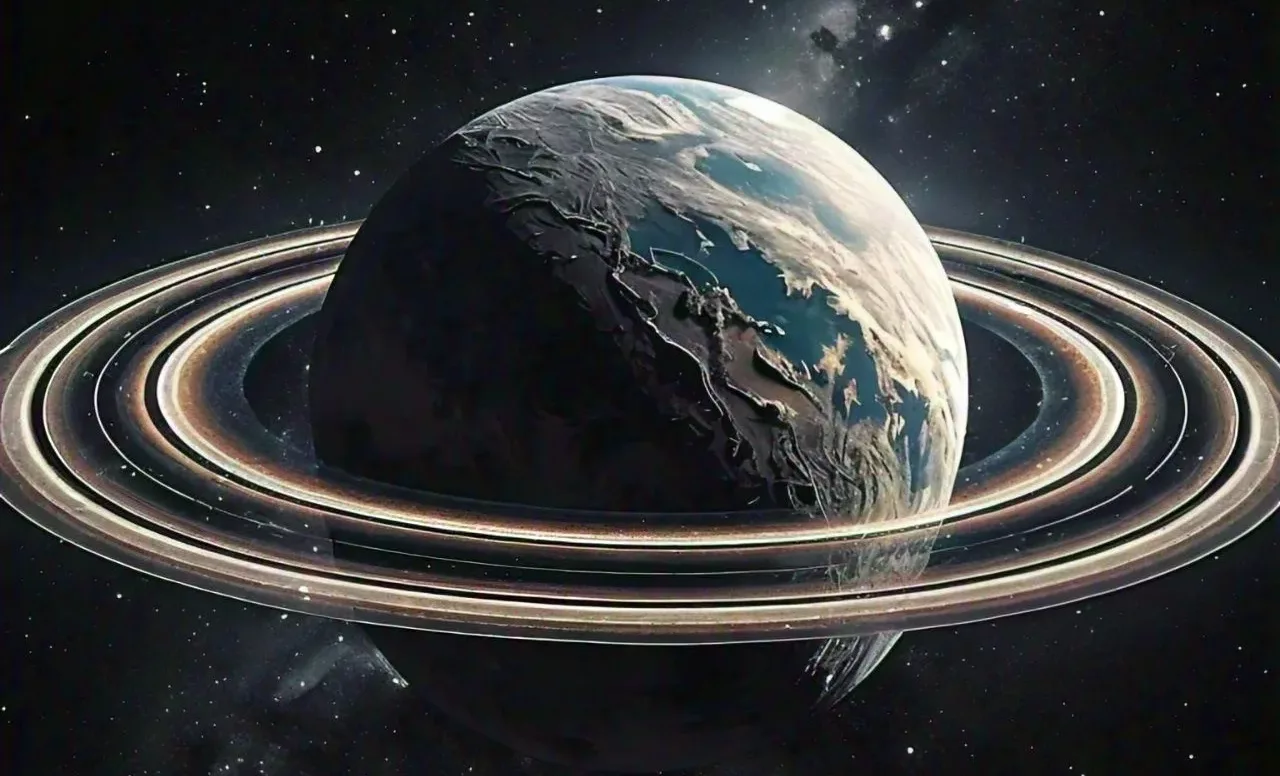Breathtaking Saturn-Like Rings Orbiting Earth?
One of the most iconic features in our Solar System is Saturn’s ring system. Its beauty and complexity have long fascinated astronomers and space enthusiasts. But what if Earth once had its own set of stunning rings, like Saturn’s? Recent work published in Earth & Planetary Science Letters now poses the possibility that Earth was encircled by such a system 466 million years ago. It’s an influential discovery that could help explain some of geology’s and climate science’s biggest unsolved problems, including the largest meteorite impact events ever recorded and a major global cooling event.
Could Earth once have looked like Saturn, with a gargantuan ring system stretching across the sky? Let’s explore some fascinating evidence in support of this possibility.
Meteorite Impact Patterns: Clues from 466 Million Years Ago
Almost 466 million years ago, the Earth had a dramatic rise in meteorite impacts. Scientists believe this is so because several impact craters from this period were discovered all around the world, but there was surprisingly little crust area near the equator. Craters from this period are remarkable for several reasons, but most notably for the sudden spurt of impacts over what was otherwise a geologically brief period of time.
They also discovered concentrations of limestone across Europe, Russia, and China containing high levels of debris from a specific type of meteorite. These in particular exhibit signatures indicating space radiation exposure much lower than seen in falling meteorites. This strange evidence overlaps with this time frame in combination with the other geologic anomalies, such as the tsunami patterns that were consistent.
The last nagging question is what caused this acceleration in meteorite impacts? Does this show some correlation to an ancient ring system encircling Earth?
For more information on planetary rings and meteorite impacts, check out these resources:
- NASA’s Overview of Planetary Rings NASA
- Learn About Meteorite Impacts Smithsonian
Crater Mapping: A Breathtaking Equatorial Pattern
Meteorite impact craters from this high-impact period have been found to be as many as 21. Advanced tectonic plate modeling was applied to track the locations of these craters to see if any sort of recognizable pattern would emerge. Strikingly enough, all the craters fell on continents that were situated near the equator at this time, with no craters found on locations closer to the poles.
Meteorite impacts should be uniformly distributed across Earth’s surface unless something extraordinary occurred. For example, lunars and Martian craters and those on Mercury do not have any preference towards latitude. Why, then, are the Earth craters confined to the equatorial regions in a way stratigraphic?
Probably, a large asteroid had come so close to Earth that the gravity ripped it apart. The debris fell over millions of years and formed a pattern of impacts around the equator-a pattern that strongly supports the theory of Earth’s ring system-the kind found orbiting Saturn.
How Planetary Rings Originate: What Happens
Saturn, however, is not alone in its ringed glory. Other planets in our Solar System, like Jupiter, Neptune, and Uranus have their own, though less showy ring systems. There are even some hypotheses that Phobos and Deimos, the two small Mars’ moons, are all that’s left of a once-around Mars ring system.
How do such rings come to be? A smaller celestial body that transits next to a much larger one, the big one will pull the little one towards it through its gravity that stretches and distorts the smaller one. If that small body moves too close-crossing a threshold known as the Roche limit- it will break apart into many fragments and scatter in all directions around the equator of the planet. This debris can eventually rain onto the planet, creating impact craters concentrated along the equator.
The above scenario reminds us of what could have been taking place on Earth 466 million years ago. When a large asteroid breaks up close to Earth, it will indeed create a ring of debris that, over time, could continuously rain onto the planet and could explain why meteorites fall with such huge impacts centered around the equator.
A Ring System That Cooled the Earth?
During this pioneering time, the continents were positioned further north or south compared to present-day post-drift positioning. North America, Europe, and Australia were positioned closer to the equator, while Africa and South America ended up being positioned much further south. If Earth had rings, they would have orbited around its equator, casting shadows over portions of its surface.
This shading effect could have cooled down the whole Earth by blocking sunlight from reaching Earth’s surface. Is not this any interesting timeline, where a significant cooling event happened? About 465 million years back in time, temperatures started to plummet, beginning the Hirnantian Ice Age-the coldest period of the last 500 million years.
Have the rings of Earth provided the catalyst for this radical cooling? Researchers are now busy developing mathematical models to predict how the asteroid debris would break up and alter the climate of Earth in any ring system produced. If the ring did indeed cause the cooling, then it provides a fascinating example of how celestial phenomena can shape planet climate.
Conclusion: The Secrets of Earth’s Ancient Rings
The possibility that Earth once wore a truly stunning ring system throws open new doors to scientific investigation. Such a ring could explain strange concentration of equatorial craters, inflow of meteorite debris, and dramatic climate swings. Future research, including sophisticated modeling of asteroid break-up and ring formation, may further illuminate this extraordinary chapter in Earth’s history.
Could Earth have been ringed like Saturn? The geological and mathematical evidence appears to be that it probably could have been. As scientists continue to unravel the mysteries of our planet’s past, someday we may find that Earth once had its very own stunning heavenly rings—ending a night sky that would have looked nothing short of spectacular.
For More Updates: Space


